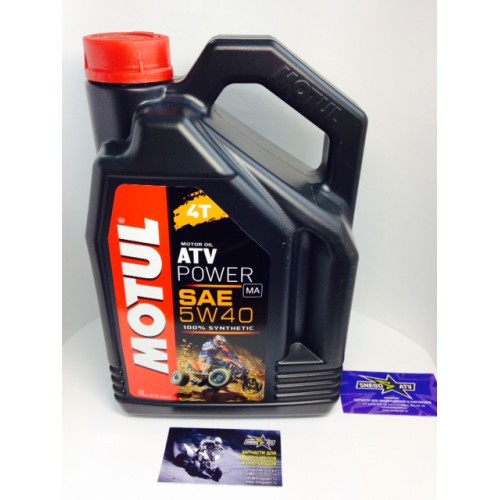ATVs are most commonly known for their ability to climb over rocks and other rugged landscapes, making it possible for people to explore territory that would have previously been impossible to reach or which would have taken days to conquer on foot. However, while your ATV can climb over objects impressively, when you hit the accelerator, it can take a bit to get going fast if you don’t find a way to increase your torque.
How do you give an ATV more torque and horsepower? The best way to give your ATV more torque and horsepower is to turbocharge or supercharge the engine, which means that you are creating a path for more pressurized air to enter the engine. More air means more fuel is getting burned, so your ATV will be more powerful in a turbocharged state.
While a turbocharged engine will provide more torque and increased power, it will also decrease the efficiency of your ATV, meaning that more fuel will be required to make the engine operate. If you are willing to spend a little more on fuel in exchange for more engine power, then turbocharging your ATV might be a good idea.
Torque and horsepower are two common measures of engine performance that most people do not understand and often confuse. While they are closely related, they have some important differences that can be critical in helping owners decide how to care for and upgrade their ATV engine.
Torque is a measure of an engine’s ability to do work.
Most engines have to spin faster in order to increase torque. This explains why your vehicle’s RPMs increase when you go up a hill and decrease when you go down a hill: You require your vehicle to do more work when climbing, while you require it to do essentially no work when going downhill.
Vehicles that have a lot of torque will be able to perform this work at lower RPMs because high-torque engines will apply more twisting force to the crankshaft. This is why some heavy-duty trucks are advertised as having “low-end torque”: They are capable of doing a lot of work, such as pulling heavy trailers, without substantially revving the engine.
This is why some heavy-duty trucks are advertised as having “low-end torque”: They are capable of doing a lot of work, such as pulling heavy trailers, without substantially revving the engine.
If you choose to increase the torque of your ATV’s engine, you can expect the following improvements:
Horsepower is a measure of how rapidly an engine can perform work.
Lightweight sports cars that operate at high RPMs will have high horsepower but low torque because they are doing little work at a fast rate.
The main advantage of increasing the horsepower of an engine is simple: you will be able to go faster!
Some may argue that turbocharging your ATV engine will do more for increasing horsepower than torque. While they are correct in the sense that turbocharged engines will go considerably faster than non-turbocharged engines, they ignore the fact that torque is a component of horsepower:
While they are correct in the sense that turbocharged engines will go considerably faster than non-turbocharged engines, they ignore the fact that torque is a component of horsepower:
(Torque x RPMs)/Constant = Horsepower
Because there is an upper limit to how fast an engine can spin, more torque means more horsepower at lower RPMs, which leads to faster speeds when the engine is spinning slower.
The best way to increase both torque and horsepower of your ATV is to turbocharge the engine.
Turbocharging means that more pressurized air is forced into the engine, which also means that more fuel is being burned. Putting in more air and fuel means that more power is being produced, which leads to the increased torque and horsepower of your ATV.
There are various ways that you can turbocharge your ATV’s engine, some of which are very simple, others that require the assistance of a professional mechanic to install a specialized turbocharging part.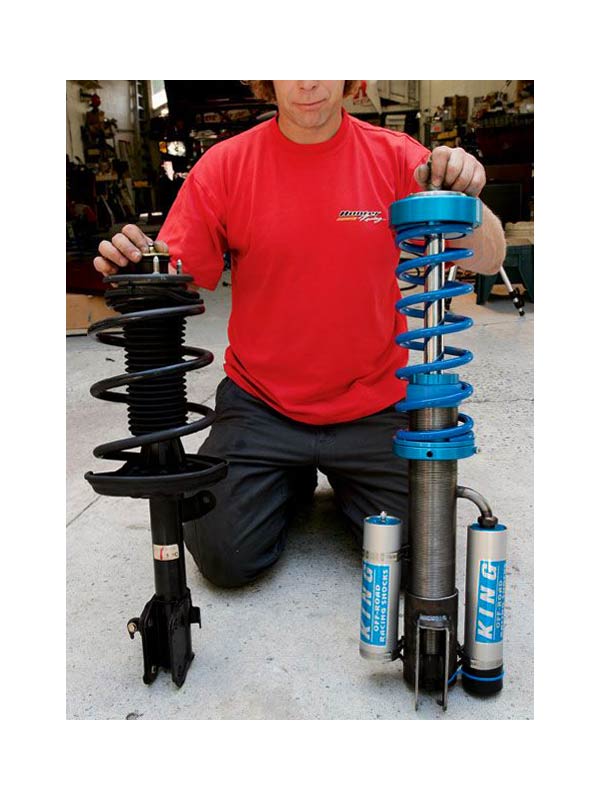
The first step to moderately turbocharge your ATV engine and give it more torque is to check the air intake system. This starts with the air filter.
The airflow on a lot of small engines can be highly restrictive, and as air is necessary for engine combustion, reduced or restricted airflow can limit the amount of your ATV’s torque.
A dirty air filter on your ATV, combined with an already restrictive air intake system, may be preventing your engine from functioning at 100 percent capacity.
Therefore, the most basic step in turbocharging your engine is to thoroughly clean your air filter.
When cleaning your air filter, if you notice that it is unusually thick, you may want to consider modifying it or exchanging it for a model that allows air to move more freely. However, note the risk that accompanies this step, as an air filter that does not properly catch debris and allows foreign particulars to enter the engine’s combustion chamber could cause serious damage.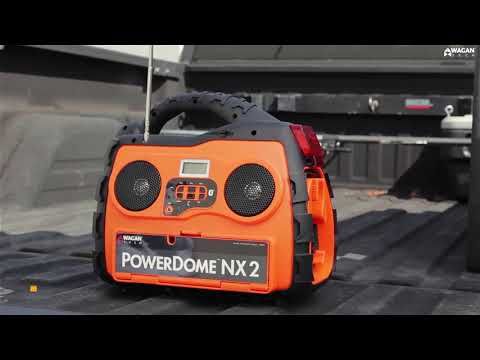
While basically all modern ATVs have fuel-injected engines, meaning that fuel is introduced directly to the engine’s combustion chamber, there is a chance that your older ATVs still use a carburetor.
The carburetor is the device that mixes air with fuel at the proper ratio and introduces it to the engine for combustion. If the carburetor is soiled or not functioning properly, the engine may be misfiring due to poor fuel quality, which will lead to decreased torque.
If your ATV uses a carburetor, drain the carburetor of all fuel and thoroughly clean the part. If you are not mechanically inclined, you may need to have a mechanic perform this step and/or replace the carburetor altogether.
While cleaning the air intake system may lead to only modest increases in torque, and your ATV is unlikely to use a carburetor, there is one surefire way to ensure that your engine gets supercharged: Add an ATV turbocharger.
A turbocharger is a specialized part designed for fuel injected engines that ensures that air is utilized most efficiently. It will more than likely require the assistance of a professional mechanic to add this part to your ATV’s engine block unless you know what you are doing.
If you can handle it yourself, you may get lucky and find a decent-priced turbo kit on Amazon.
In addition to adding pressurized air to the intake system, turbochargers also redirect exhaust gases, preventing the loss of power from air escaping through the exhaust pipe.
Turbochargers work by using small fans to redirect wasted heat and air back toward the engine. This increased air requires the introduction of more fuel to the engine, which allows the engine to operate more powerfully, leading to an increase in torque and horsepower.
This is an especially beneficial process because it allows for more torque to your ATV without having to upgrade the engine. This means the ATV will be the same weight as before, making the increase in power all the more noticeable.
A turbocharger for your ATV will likely cost about $200, unless you can find a good deal. While the cost of having a mechanic install this part will seem high initially, it will be much more cost-effective than having a high-torque engine installed.
While improving the air intake on your ATV is the most surefire way of gaining torque, there are a couple of other ideas that may help increase engine power if you have already explored the above options or do not have the budget to get your ATV supercharged:
If you’re looking for ways to make your quad go faster, this is where you want to be.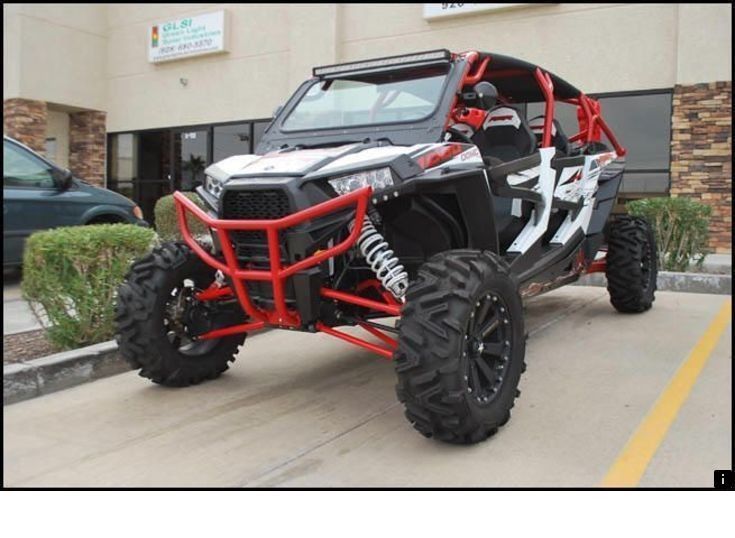 I will show you the most common ways riders make their ATVs faster, I’ll also offer some helpful tips along the way.
I will show you the most common ways riders make their ATVs faster, I’ll also offer some helpful tips along the way.
With more horsepower and torque, you will notice better acceleration and a higher top speed from your quad. But with the engine working harder, are these upgrades safe for your ATV?
Yes, they are. Anytime you ride your quad faster or harder than normal you are increasing the wear and tear that happens over time. You can limit these effects by performing routine maintenance though.
Be careful if you have factory warranty though. Many alterations will void a warranty, so first check to make sure if you don’t want your warranty to voided. If you do have a warranty, and want to keep it, it may be best to just not modify the machine at all until the warranty has expired.
Overall, these upgrades are considered safe and many riders have been making these changes to their quad for years and years. Lets start by looking at the easiest and cheapest ways to make your ATV faster.
A quick and easy change you can make, is to start using higher octane fuel. A lot of quads don’t require that you use higher octane fuel from the manufacturer, but it can help increase the performance of your engine.
If you can, don’t use ethanol based fuels and opt for the higher octane. It will cost a few more bucks than the cheap fuel, but you’ll certainly notice the difference when you hammer on the throttle.
Higher octane fuel burns cleaner, giving you better gas mileage and less corrosion to the mechanical parts of your fuel system.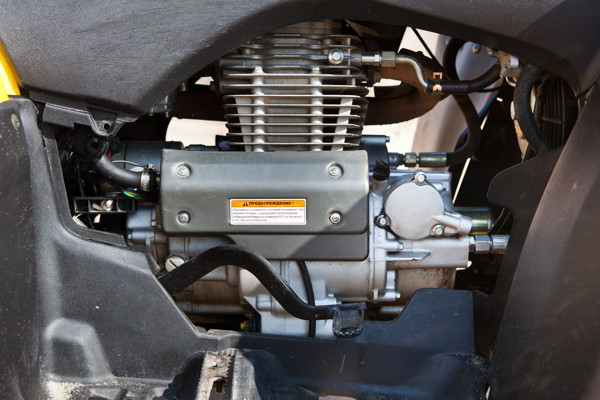 Sure the better mileage isn’t really noticeable in a quad, but the performance differences are there.
Sure the better mileage isn’t really noticeable in a quad, but the performance differences are there.
Some riders want even more of a boost than the fuel sold at a gas station, so they will add more octane to their fuel themselves. Here is a link to Boostane Professional Octane Booster on Amazon. This is one of the most popular and widely used octane boosters out there, but really any octane booster will work.
You can just add a little bit to the gas in your quad and mix it up a bit by rocking back and forth on the machine. I like to pre-mix it in a gas can before putting it in the gas tank, that way I can get the measurements exactly right.
You should be checking your air filter regularly and cleaning it when necessary. If the air filter starts getting clogged up, it will affect the amount of air the engine can use to run. Riding with a clogged air filter is almost like choking your engine. Check out this article on How To Properly Clean An ATV Air Filter if you need a guide.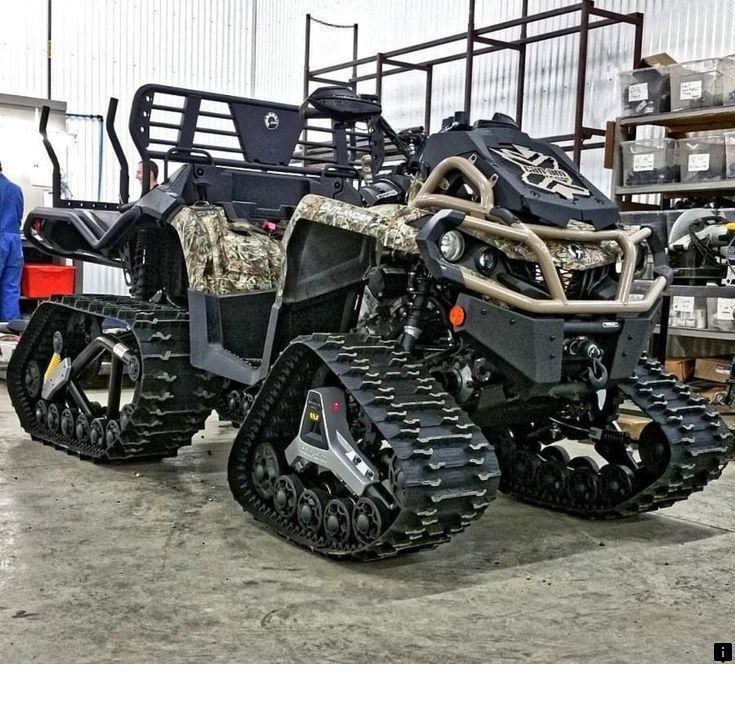
A lot of riders will also upgrade their air filter to a lifetime replacement air filter like this K&N Replacement Air Filter on Amazon. Just make sure you type in your make and model and get the right one for your machine.
The increased air flow these filters allow will let your engine receive more air. More air fuel mixture means more power. This is one of the easiest ways to get more performance out of your machine.
On most ATVs, if you look on the right side of your handle bars where your throttle is, you’ll see a governor. On the governor, there will be a screw sticking out, that’s your throttle limiter. The throttle limiter will limit the amount of gas you can give your engine while riding.
Make sure the screw is turned all the way out, if you want to be able to give max throttle. To adjust this, simply loosen the lock-nut holding the throttle limiter screw in place, adjust the screw, and tighten the lock-nut back down.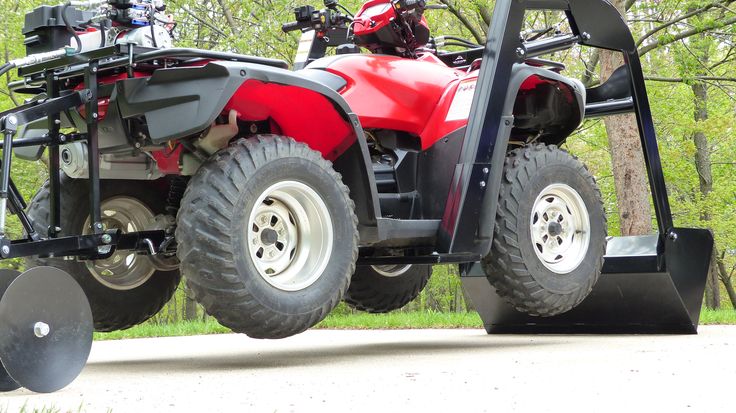
A lot of people will screw the throttle limiter in if they have children that might be able to ride the machine. Double check the throttle limiter screw to make sure you’re getting the max your engine will allow.
Of course tire pressure will play a role depending on the type of terrain you’re riding in. When riding in sand or snow, a lower tire pressure will make you faster, but on flat hard surfaces, a higher tire pressure would help more.
I would suggest riding at around 5 psi as a good all around number. But to find an exact tire pressure for you and your terrain, check out my ATV Tire Pressure article where I go into a lot more detail about tire pressure and terrain differences.
As far as tire weight goes, you’ll really be looking at changing out the wheels to help with that. I mean sure, don’t expect big heavy mud tires to make your quad go faster, but really the biggest issue I see here is people with steel wheels.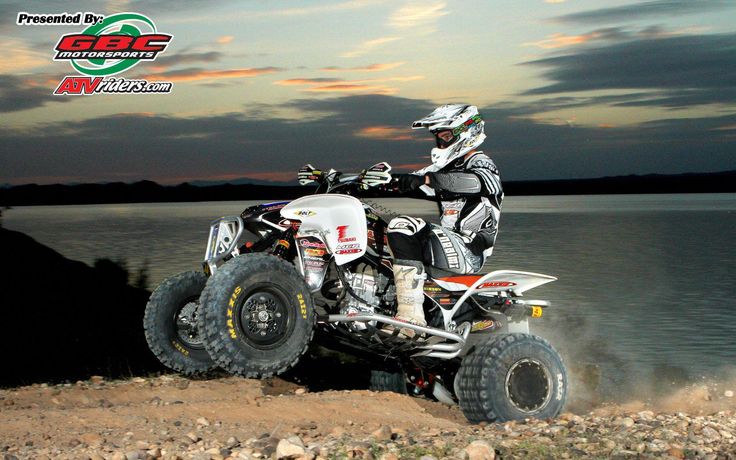
You’ll want to get yourself some light weight aluminum wheels if you want to make your quad faster. A nice set of performance tires won’t hurt either. Tire size might make a difference too, depending on what you’re going for.
Check out these All Terrain ATV UTV Tires made by SunF here on Amazon if you’re in the market for tires. Make sure to get the right tire size for your ATV and your rims.
If you want faster acceleration, go with a smaller tire. If you want more top speed, go with a larger tire. Tire size is very similar to changing out your sprocket for gearing. A larger tire will take more power to turn it, but will cover more ground per revolution. I usually don’t change the tire size unless I am trying to Increase My ATV Ground Clearance.
Adding a nitrous kit to your ATV can give you a good boost of speed when you really need it. They aren’t really all that hard to install or use either. Sure every machine is different, and you’ll want to get a setup you feel safe with.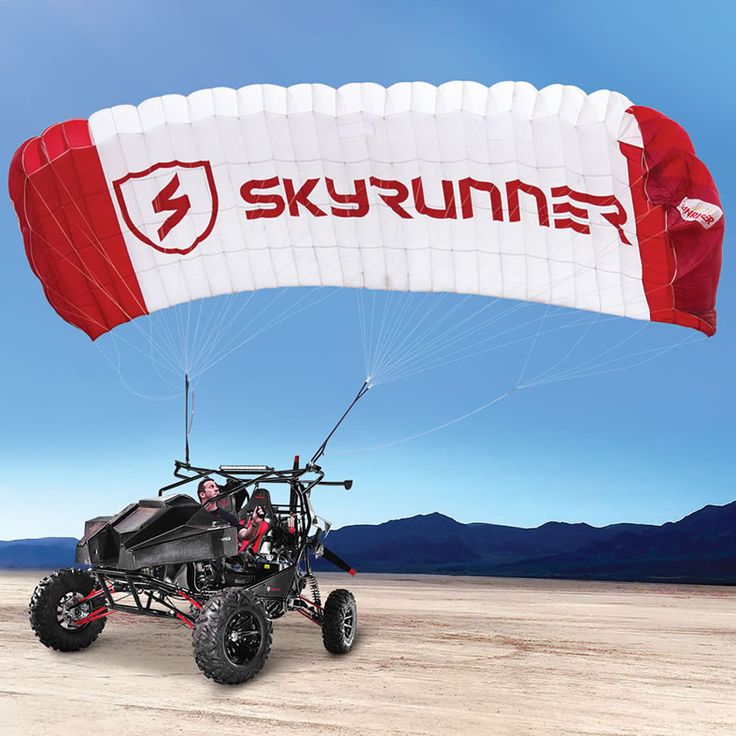 But a lot of people have getting some extra speed this way.
But a lot of people have getting some extra speed this way.
There are a few different types of nitrous setups you could go with, for example, wet or dry. To learn more about nitrous check out my How And Why To Use Nitrous On An ATV article. In that article I walk you through the process so you can decide if it’s right for you.
Upgrading the exhaust on your ATV can get expensive and require some work. But it’s a sure fire way to increase the performance of your quad. With more air being able to leave the engine, it can pull more air in. This setup is great to do in parallel with a high flow air intake system.
If you can’t afford to do the entire exhaust system from the headers on down, you could always get a performance slip-on exhaust. This won’t increase horsepower as much as an entire performance exhaust system will, but it will give you a bit more horsepower.
Here’s an example Performance Exhaust System For A Honda TRX 300EX to give you an idea of what you’ll need. You are looking for a kit that has the exhaust parts coming from the engine all the way to the muffler and exhaust tip.
You are looking for a kit that has the exhaust parts coming from the engine all the way to the muffler and exhaust tip.
Usually the performance exhaust systems will be a bigger diameter than stock, or will be cone shaped to increase in diameter slowly. This allows more airflow through the engine. With more air fuel mixture, you will feel more power and speed when riding.
To change the gear ratio you would need to buy a new front or rear sprocket and replace your existing one. A lot of riders do what is called ‘gearing down’ which is when you get a larger rear sprocket to increase acceleration. This will cause your top speed to drop though. To learn more about gear ratio and how to adjust yours, check out my Complete Gear Ratio Guide.
To ‘gear up’ you would get a smaller rear sprocket which will increase your top speed but decrease your acceleration. You can find most sprocket sizes front and back online now for a pretty good price.
The thing you have to decide is, do you want an acceleration increase or a top speed increase. I don’t typically mess with the gearing of my quads, but I have for particular ATVs that I only ride through trails and never reach top speed. In those cases, gearing down makes sense to give you a quicker jump from the start.
If you decide you want to change a sprocket to adjust your gear ratio. I wrote an article with step by step instructions for you, showing you exactly How To Change The Chain And Sprockets On An ATV.
Installing a big bore kit can be a lot of work, but will give you a huge boost in performance. Acceleration will be quicker and top speed will increase as well. You’re basically upping the cc of your engine.
With most big bore kits, you will be replacing the piston and the cylinder with a larger size. This allows for more air fuel mixture to enter the combustion chamber resulting a huge performance boost to your quad.
Here’s an example Big Bore Kit For A Honda TRX 400EX on Amazon to give you an example of what you’re getting yourself into. You will most likely get all the piston rings and gaskets needed to do the swap with any decent kit.
There you have it, the most common ATV upgrades to increase performance and get some more speed out of your machine. If you’re looking for the cheapest and easiest way to increase performance, I would suggest checking your limiter screw, upgrade to a K&N air filter, use octane booster, and get a slip-on performance exhaust.
Even though you could make all these adjustments to your quad, a lot of riding faster has to do with skill. When you’re racing on track, being able to brake and corner properly is a big deciding factor in most races. Check out my How To Corner On An ATV and How To Brake Properly On An ATV articles to get some tricks and tips on how to ride better.
As always, wear proper safety gear when riding, especially if you’re modifying your quad for speed. To check out some safety and riding gear that I’ve tried and tested for you, visit the Recommended Gear section of this site.
To check out some safety and riding gear that I’ve tried and tested for you, visit the Recommended Gear section of this site.
Sharing is caring!
In order for the ATV to work like a clock, the rider needs to regularly carry out a complete maintenance of the equipment. And a key element of maintenance is ATV carburetor adjustment. Over time, the system starts to work incorrectly, which increases fuel consumption, worsens dynamics and other problems appear. So how do you adjust an ATV carburetor?
The operation and life of the engine directly depends on the quality of the fuel mixture. The carburetor is responsible for the preparation of the composition, but after prolonged use of the equipment, the settings “go astray”.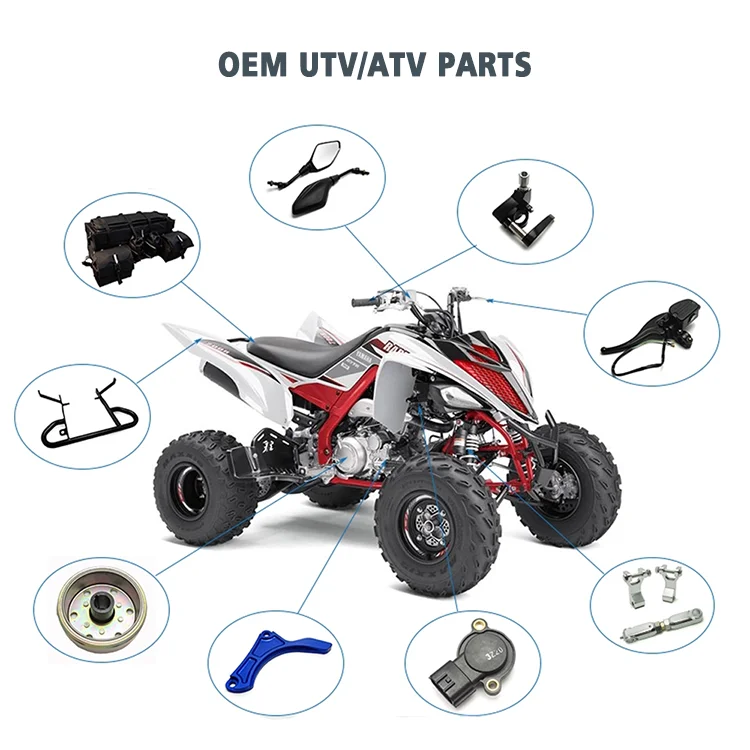 This results in:
This results in:
Many riders who decide to buy an inexpensive ATV simply do not spare the technique and ignore this procedure.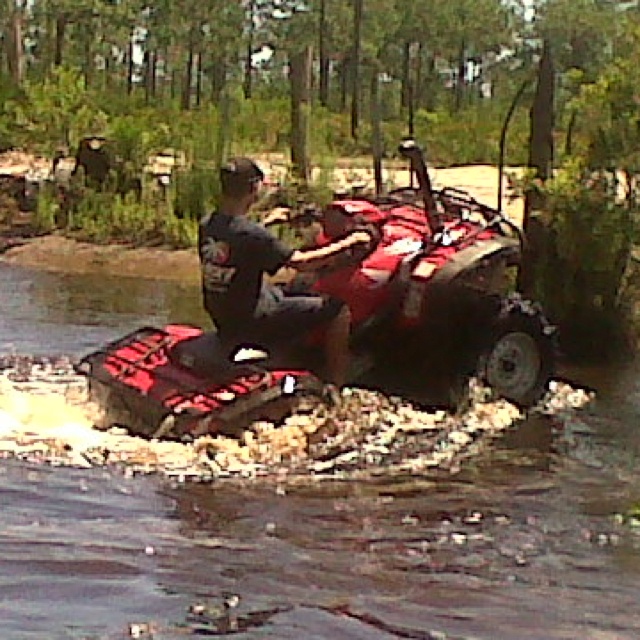 But even if you plan to change your device in 1.5-2 years, adjustment is needed. The reason for this is increased fuel consumption. A quad with an untuned carburetor "eats" 30-40% more gasoline, and these are tangible costs.
But even if you plan to change your device in 1.5-2 years, adjustment is needed. The reason for this is increased fuel consumption. A quad with an untuned carburetor "eats" 30-40% more gasoline, and these are tangible costs.
So how do you adjust the carburetor on a Chinese ATV? For this you need:
However, it is important to remember that all adjustments are made only with a "clean" carburettor. This means that the rider needs to remove all the dirt from the node and flush the system to remove condensation and sediment from it.
Note: Just before adjusting, the engine must be warmed up to operating temperature.
To set the carburetor idle speed, the float chamber must first be cleared of fuel.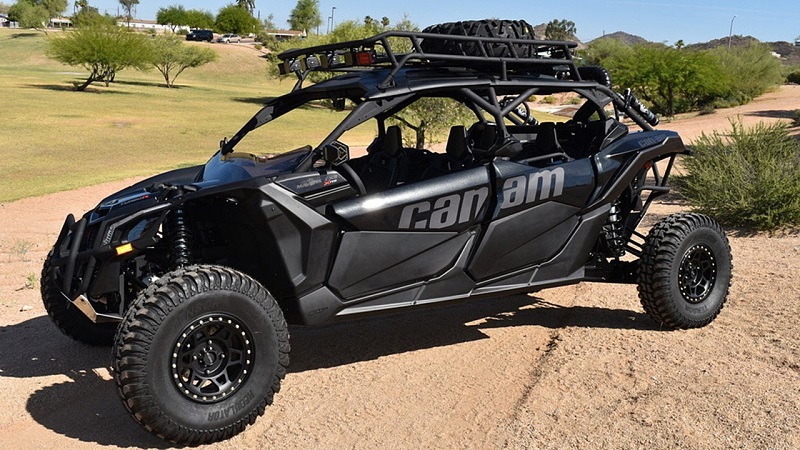 To do this, start the ATV, close the fuel cock and wait until the machine stalls (5-10 minutes). To speed up the process, you can take a little ride on the quadric. Of course, gasoline can be drained, but in any case you will have to warm up the device, so the first method of "removing" gasoline is more effective.
To do this, start the ATV, close the fuel cock and wait until the machine stalls (5-10 minutes). To speed up the process, you can take a little ride on the quadric. Of course, gasoline can be drained, but in any case you will have to warm up the device, so the first method of "removing" gasoline is more effective.
Then:
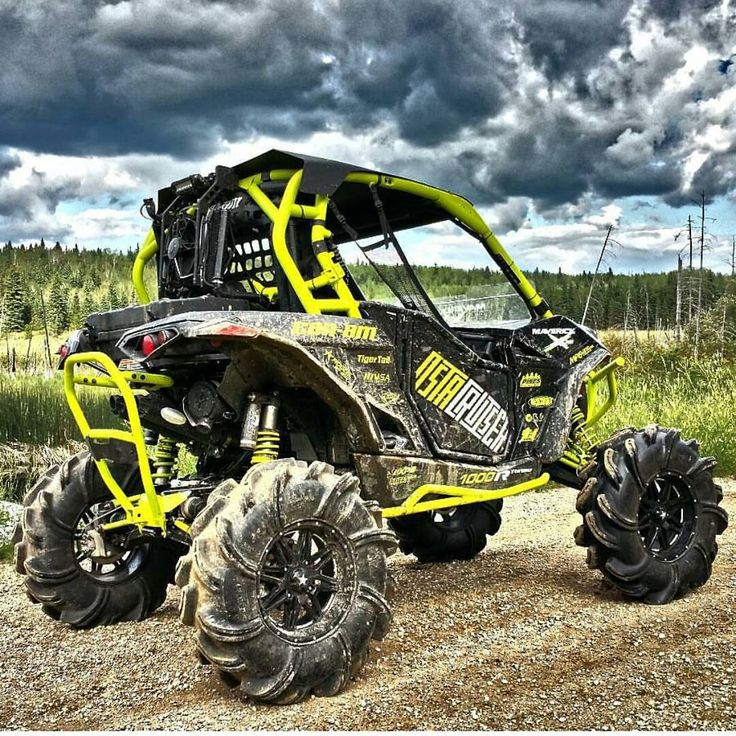 Focus on sound. The engine should run smoothly, without strain.
Focus on sound. The engine should run smoothly, without strain. Read the manual before adjusting the carburetor on a 125cc ATV to be sure. Remember that the location of the bolts is different in different devices, so read the documentation in advance.
To evaluate the quality of the fuel composition, make a test run. After that, unscrew the candle, and evaluate its condition. If it is:

Also look out for these “symptoms”: damaged tip (electrode failure), oil deposits (damage to rings and caps), chips and inclusions (sign of motor failure).
To adjust the mixture you need to twist the needle cover and pull it out. To get the needle, pull out the cable. After that, move the ring in the required direction (lower - more air, but less fuel and vice versa). Then start the engine and make sure it doesn't stall.
The last step in adjusting the 125cc ATV carburetor is adjusting the petrol level. To do this, you need:
Note: Adjust as carefully as possible as system components are very fragile. Ideally, carburetor tuning should be done by a specialist.
06/16/2020 21088
> MOTOR EQUIPMENT> Decoding the designations of ATV engines and increasing power
This article will focus on decoding the markings of Chinese engines.
Since there are a lot of engines made in China in our country, I think it is useful to know and understand the abbreviation of numbers and letters that mark these engines:
The first digit of the code corresponds to the number of cylinders. The letter P means a horizontal arrangement, with a V-shaped arrangement of two cylinders, the letter V is placed, with a vertical arrangement of the cylinder (or if there are two of them in parallel), the letter is not set.
Second and third digits - rounded (upwards) cylinder diameter in millimeters.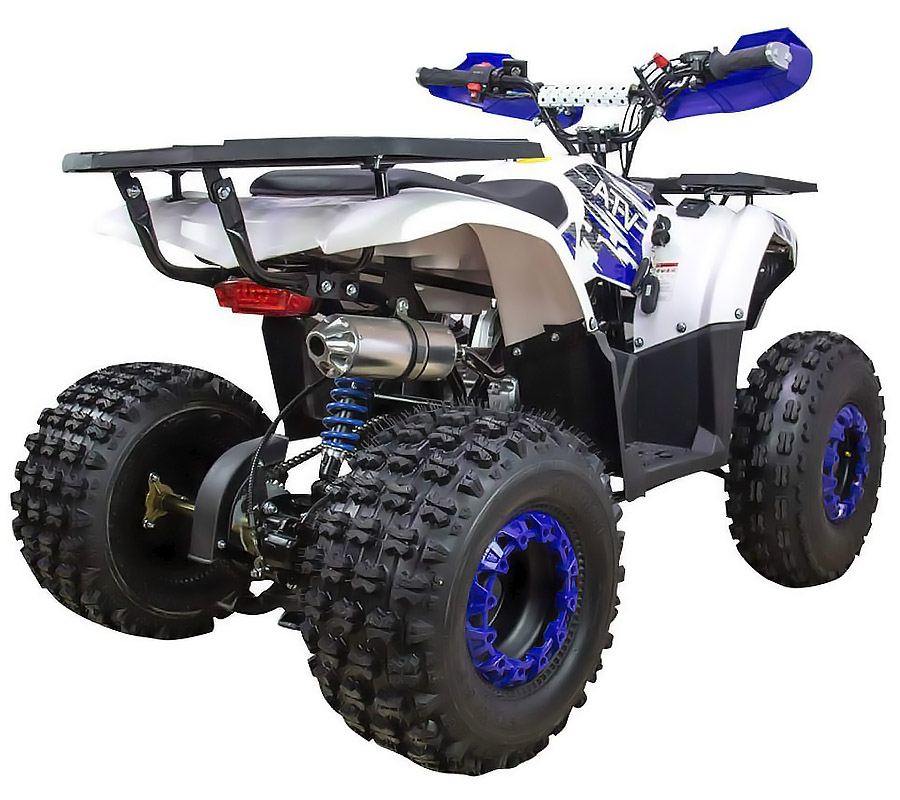
The first letter after the numbers indicates the type of cooling system: F - air, by ram air; Q - forced air, when the letter before the letter is omitted M - it means liquid cooling. The very same letter M, always present in the designation, refers to the engines of the motorcycle type.
The third letter of is the code for the displacement in cm / cu: A - <50 ; B - 50 ; C - 60 ; D - 70 ; E - 80 ; F - 90 ; G - 100 ; H - 110 ; I - 125 ; J - 150 ; K - 175 ; L - 200 ; M - 250 ; N - 300 ; R - 350 ; Q - 400 ; R - 500 ; S - 600 ; T - 650 ; U - 700 ; V - 750 ; W - 800 ; X - 900 ; Y - 1000 ; Z - 1200 .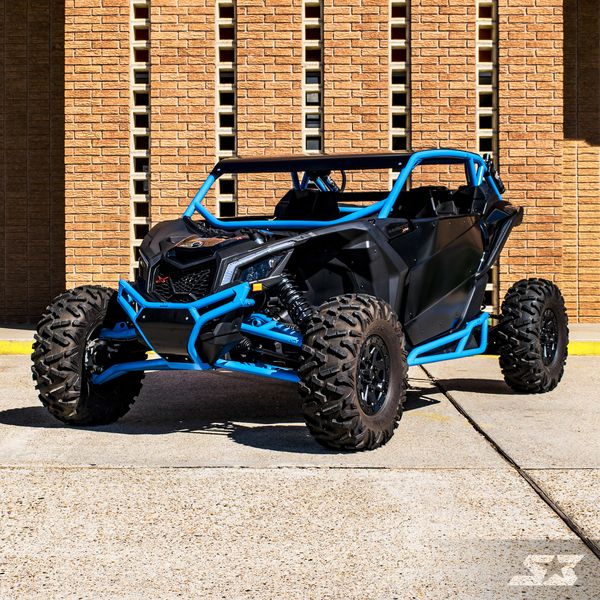
Example:
139QMB: 1-cylinder scooter air vent with bore 39 mm and displacement 50 cc . If we make a simple calculation using the cylinder volume formula V=SpD2/4, we calculate the piston stroke S=41 mm. Only the engine of the Honda GY6 /
1P39FMB family has this dimension (with some rounding): would seem to be the same, but this air-cooled engine is, of course, a 50-cc Honda Super Cub clone.
152FMI is also an air-cooled single barrel, 125 cc/cu.
255MM - 2-cylinder 250cc liquid-cooled engine, apparently CM250, 2V49FMM - Air-cooled V-twin, clone of Yamaha's "Witch" XV250S Virago.
Since some unscrupulous sellers often decently overestimate the technical characteristics of the motorcycles they sell, in order to gain an advantage in sales over their competitors, we will analyze
Is it possible to increase the engine power?
Surely, many of the fans of ATVs sometimes thought about how to make their steel monster faster. Of course, it will not be possible to make a Formula 1 car out of an ATV, but in principle it is possible to slightly increase the speed. So for example, when boring a cylinder, you can increase engine power by about 5%.. Not enough? you can do more, BUT, be prepared to incur significant costs in the modernization process. Since in order to increase engine power, it will be necessary to change not only the cylinder head, or the carburetor, which often simply will not fit this engine “physically”. It will also be necessary to change a number of expensive engine parts, including the shaft and gears. in a nutshell, it is easier to put another, more powerful engine, provided that it is not very different in size from the one being replaced, it will fit into the frame of your ATV and you can fix it there in some way. Since the more power, the larger the size of the engine itself. Example: boat motor. have you seen a 2hp outboard motor? And 5l/s? and 8? now put them side by side and compare the size.
Of course, it will not be possible to make a Formula 1 car out of an ATV, but in principle it is possible to slightly increase the speed. So for example, when boring a cylinder, you can increase engine power by about 5%.. Not enough? you can do more, BUT, be prepared to incur significant costs in the modernization process. Since in order to increase engine power, it will be necessary to change not only the cylinder head, or the carburetor, which often simply will not fit this engine “physically”. It will also be necessary to change a number of expensive engine parts, including the shaft and gears. in a nutshell, it is easier to put another, more powerful engine, provided that it is not very different in size from the one being replaced, it will fit into the frame of your ATV and you can fix it there in some way. Since the more power, the larger the size of the engine itself. Example: boat motor. have you seen a 2hp outboard motor? And 5l/s? and 8? now put them side by side and compare the size. The more power, the larger the size of the product itself.
The more power, the larger the size of the product itself.
Of course, from a 250cc engine, you will never get 350cc, or even 300cc. However, it is possible to increase the power of your engine within reasonable limits.
To do this, we suggest using the following methods to increase the speed and "throttling" of the ATV:
1. Install a new air filter that will supply better air, which will increase the acceleration of your ATV. Such air filters are produced by various manufacturers specializing in spare parts for tuning ATVs. The filter can be bought at an auto or motorcycle shop, or ordered directly from the manufacturer.
2. Install a new exhaust system, ideally a "co-current" exhaust system that will increase the power and speed of your ATV. These systems are also produced by specialized firms.
3. Change the gear ratio by putting a smaller sprocket on your ATV (assuming your ATV has a chain drive). The larger the sprocket and the smaller the sprocket, the greater the speed indicator, in return you sacrifice power.